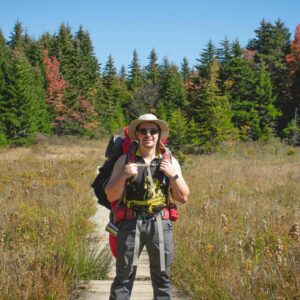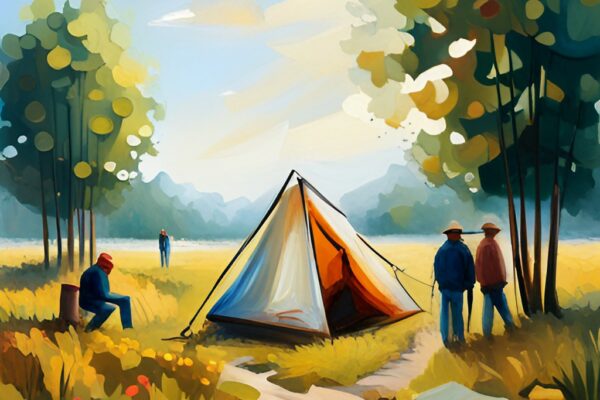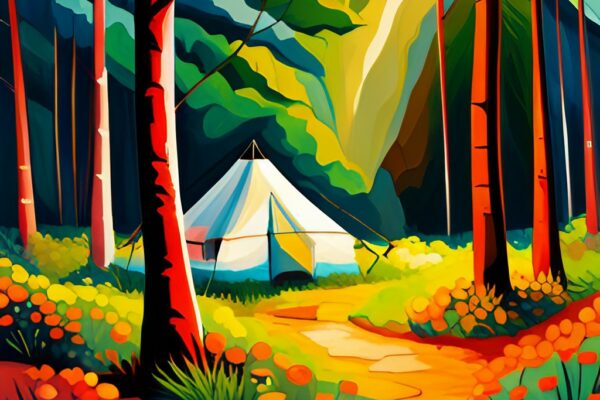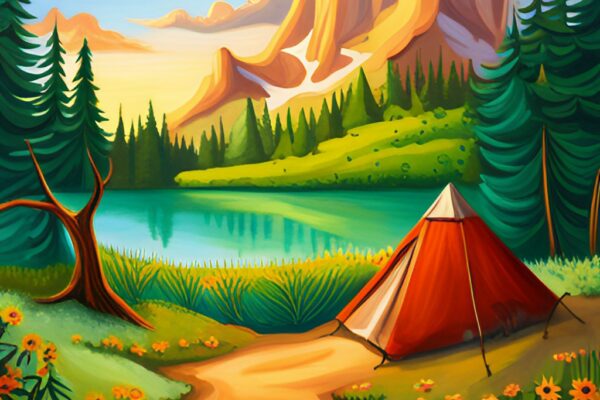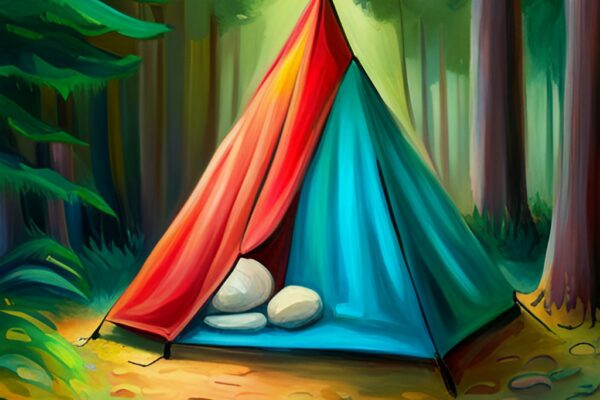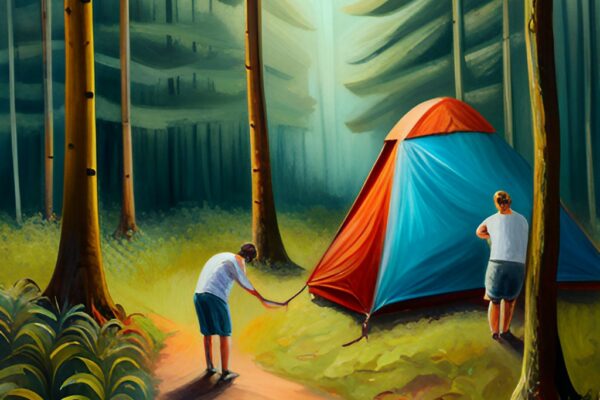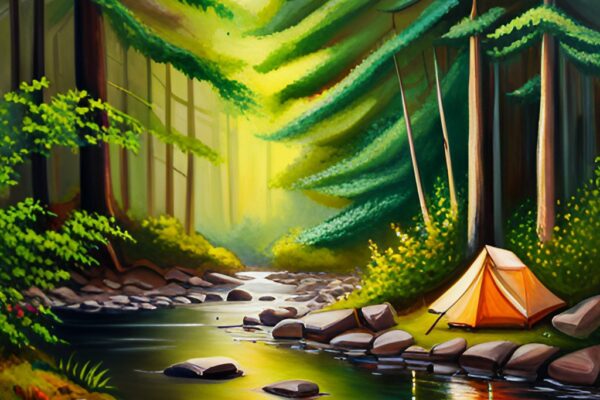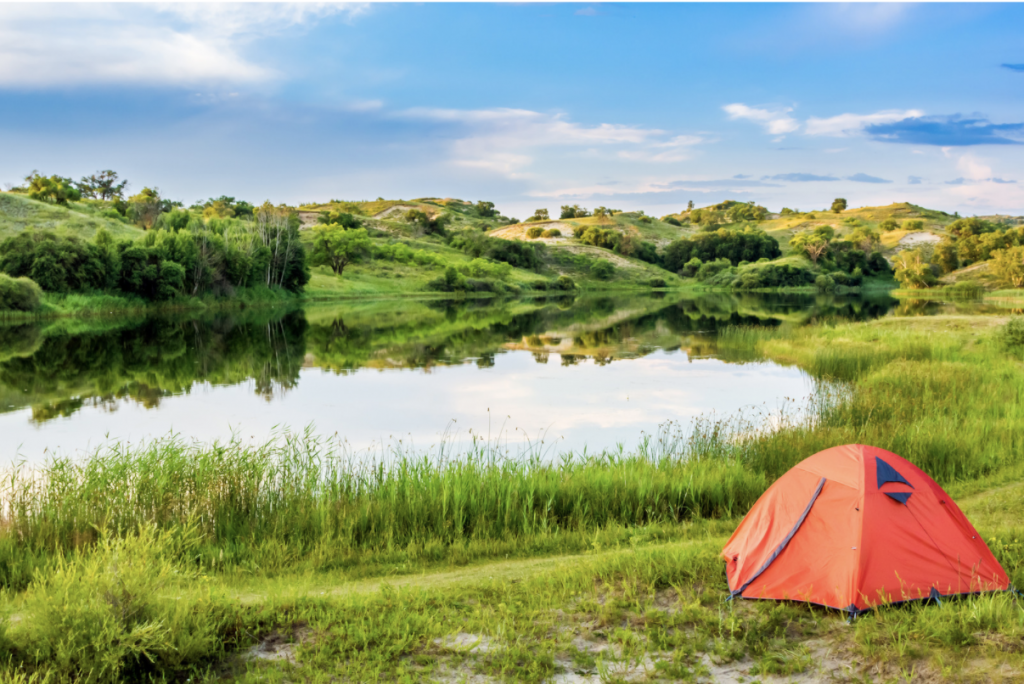
For someone new to camping, all those types of campgrounds and campsites can be very confusing. You can categorize campgrounds based on who owns them. And there are different types of campsites within each campground.
We made this article as a comprehensive guide for the common terms you’ll see when reserving campsites, as well as how to find good camping spots. Hopefully, it makes your booking process easier!
Types of Campgrounds by Ownership
Land for camping belongs to different federal agencies and private parties, each with their own set of rules. If you violate them, you may be asked to leave or charged a hefty fine.
On the bright side, you can find some hidden gems if you really learn the rules while everyone else is signing up for the most popular campgrounds.
There are 4 federal agencies that manage public lands: National Park Service (NPS), U.S. Forest Service (USFS), Bureau of Land Management (BLM), U.S. Fish & Wildlife Service (USFWS).
Camping areas can also be owned by state parks and private hosts.
National Park Campgrounds
These are located in the most scenic areas, such as the Grand Canyon, Yellowstone, and Rocky Mountains.
The only goal of the NPS is to preserve the natural lands, so extractive activities, sports hunting, and off-road vehicles are usually banned.
Then it’s no surprise that camping in National Parks can be pretty restrictive, especially for RVs.
- Reservations are almost always required at recreation.gov
- Limited free and dispersed camping opportunities outside of designated campgrounds; need to check with the specific park
- Mostly dry camping within established campgrounds, few campsites with water or electric hookups
- Most campsites have a maximum stay of 7 days
- Stringent pet rules — allowed only on leash and in developed areas
- High entrance fees (usually $20 – $50) compared to other public lands
But there are advantages to camping in national parks:
- Good pavement
- Well-marked and maintained trails
- Visitor centers as the one-stop resource
- Well-maintained facilities like clean bathrooms
Camping in various national parks is still on my bucket list for the spectacular landscape, but I would look elsewhere for a long-term stay.
Can you camp for free in national parks?
You likely cannot camp for free in national parks due to the limited dispersed camping options outside of designated campgrounds. Some parks do not allow dispersed camping at all. Even when dispersed camping is available, it will be more appropriate for tent camping than RV camping.
National Forest Campgrounds
Feel like camping in national parks might be too restrictive? Well, check out the national forests managed by USFS.
Many in the surrounding areas of national parks. So you can enjoy more flexible camping rules while knowing the breathtaking scenery is just next door.
- More first-come, first-serve campgrounds with no need for reservation
- More options for dispersed camping
- Most campgrounds come with no hookups, and access might be challenging for large RVs
- Longer stays of 2 weeks or more are usually allowed
- More freedom for pets to go off-leash or into less developed areas
- Lower costs than National Parks, usually free or under $30
Though there are millions of acres of National Forest, the USFS makes it easy for us to find the perfect camping spot.
Simply go to “Visit Destinations”, and you can select your activity as well as destination.
When you click on any result, it will take you to a specific page for that destination outlining all the rules and activities.
Also remember to do some homework on the road and weather conditions. Some forest access roads might be in very bad condition.
What is BLM Camping?
BLM camping refers to camping on public lands managed by the Bureau of Land Management. Compared to national parks and USFS, BLM offers larger areas of undeveloped lands for free and dispersed camping, though established campgrounds are also available.
In fact, BLM public lands are the largest in terms of acres covered. They are concentrated on the west, which is a bummer for those living in the midwest and east coast. Just take a look at the BLM map below:
Is BLM Camping Free?
Camping on most BLM lands is free through dispersed camping. These are usually undeveloped lands with little to no amenities (toilet, shower, etc.). If you camp on established BLM campgrounds, there will be a small fee.
How Do You Find BLM Land to Camp On?
To find BLM land to camp on, simply use the search function and interactive map on BLM’s website. You can choose based on the state, your favorite activities, keyword, or location. You can do dispersed camping almost anywhere on BLM land. Contact the local BLM office before your trip to confirm that the area is open.
What Are The Rules for Camping on BLM Land?
I’ve outlined the key BLM camping rules below:
- Maximum of 2 vehicles and 10 people per individual campsite in developed areas
- Quiet hours 10pm to 6am in developed areas
- Build fires only in the stove, grill, fireplace, or ring if provided
- Maximum stay of 14 days before you need to relocate to somewhere at least 25 miles away; cannot return to the original campsite in the next 28 days
- Set up camp at least 200 feet away from water sources
- Dispose of waste away from water or in a hole deeper than 6 feet
U.S. Fish & Wildlife Refuge System Camping
If you want to do any activities related to wildlife, such as sighting, hunting, fishing, and photography, camping on USFSW land is your best bet.
- RV camping is limited
- Free camping is available
- Can stay up to 14 days in a 30-day timeframe
State Park Camping
A lot of land is owned by the state rather than the federal government, especially on the east coast.
There are a ton of variations in state park campgrounds. Some may operate like national parks with stringent rules, while others may offer large amounts of land for free camping.
Always check with the specific state park you are interested in.
Private Campgrounds
So far we’ve only talked about public campgrounds. But what about those that are privately-owned?
The biggest advantage of private campgrounds is the additional amenities. Many sites come with full electric, water, and sewer hookups, which can be difficult to reserve at public campgrounds.
You may also get access to entertainment facilities like game rooms, pools, basketball courts, etc. I’d say these can certainly make your family vacation more complete.
But, of course, there are drawbacks to private campgrounds. The first is the price. According to Wandrly Magazine, public campgrounds cost $23/night on average, while private ones cost close to $40.
In terms of scenery, private campgrounds can be great, but they usually aren’t located in any well-known destinations.
Types Of Campsites
Campsite Classifications
This refers to how campsites are classified based on the amenities they offer.
What Is a Class A Campsite?
A Class A campsite is one of the most common types of campsites. They come with more amenities than the class B, C, and D campsites on this list.
Most Class A campsites have showering facilities and toilets available to campers, though the toilets may not flush. Therefore, you’ll want to do some research about the area you want to camp in to see if toilets are an essential amenity to you.
All Class A campsites are accessible by vehicle, and you’ll be able to park close to your base camp.
For those who have an RV, Class A campsites are great because every Class A campsite must have electric hook-ups. This way, you can power everything you need while still enjoying the outdoors. The one downside is that Class A sites don’t have sewer hook-ups.
All Class A campsites have fire rings and picnic tables or benches you can use. So you don’t have to worry about building or bringing your own.
What Is a Class AA Campsite?
A Class AA campsite is similar to a Class A campsite in several ways. You’ll have many of the same amenities as well as a few bonuses. Of course, class AA sites tend to be more expensive.
You’ll still be able to access the campsite by car or RV easily and have access to fire rings and picnic tables. Class AA campsites have public restrooms for campers to use with flushable toilets. Many even have sinks inside the bathrooms.
Class AA campsites tend to be more appealing to RV campers because, unlike Class A campsites, they typically provide sewer hook-ups. This way, you can utilize all the features of your RV.
But, as with every site, you’ll want to double-check that there are sewer hook-ups if you plan on using the plumbing in your RV.
Class AA campsites don’t generally have water hook-ups, though. So it’s essential to fill up on water before arriving at your campsite.
What Is a Class AAA Campsite?
Class AAA campsites are going to be more luxurious than the previous two campsite classifications. They will include every amenity that comes with Class A and Class AA campsites.
You’ll still be able to park relatively close to your base camp, whether in a car or RV. There will be bathroom facilities and sewer hook-ups for RV campers, as well as electrical hook-ups.
The features that set Class AAA campsites apart from Class A or Class AA are that the bathrooms tend to be heated, the electricity is more powerful, and they have water hook-ups.
Due to the added comfort you’ll experience at a Class AAA campsite, the cost per night of camping tends to be higher at these sites.
What Is a Class B Campsite?
Class B campsites are not nearly as luxurious as a Class A campsite. These campsites are great for campers who prefer to “rough it” and are still an easy and enjoyable way to spend time outdoors.
You will still have easy access to the campsite by car or RV and sometimes electric hook-ups. If they do have electric hook-ups, they won’t be as powerful as other campsites. These campsites are great for short trips and for those who aren’t concerned with having public restrooms.
If you’re on a budget, these sites are great because they tend to be cheaper due to the lack of amenities.
These campsites don’t offer water hook-ups. Therefore, you won’t have access to any shower facilities or toilets. Instead, you’ll have to find other ways to stay clean or bring a camping shower.
What Is a Class C Campsite?
A Class C campsite is another campground that has limited facilities and amenities. These campsites tend to be as basic as they come.
You won’t find showering facilities at Class C campsites and more than likely no toilets either. Granted, some do offer toilets, but you probably won’t be able to flush them. If you’re camping at one of these sites, you’ll be going without electric hook-ups.
One thing that Class C campsites have that other more basic sites don’t is clean water. The majority of these sites give campers access to clean water for drinking and bathing.
You can still access Class C campsites by vehicle, and you’ll be able to park reasonably close to your base camp. Some Class C campsites may allow RV campers, but without electric hook-ups, you may want to look into a campsite where you can utilize all the features of your RV.
What Is a Class D Campsite?
Class D campsites are perfect for those who want to immerse themselves in the camping experience. These primitive campsites allow campers to experience nature in a different way than non-primitive campsites.
When you choose a Class D campsite, be prepared to walk or hike to your base camp. Unfortunately, these campsites do not provide vehicle access. Therefore, you’ll have to park in a designated parking spot that is usually not very close to where you’ll set up.
These campsites offer a nature experience like no other, but you’ll be going without electric and water hook-ups, sewer hook-ups, and shower and toilet facilities.
If you’re looking for a campground to park your RV at, Class D campsites are not going to be the one for you.
Types of Campsites by Access
What Is a Drive-In Campsite?
Drive-in campsites are campsites that offer vehicle access. When you reach the park you’re going to spend the night or a few nights in, you’ll find yourself at your campsite quickly. These campsites have gravel or dirt paths that you can drive on.
When camping at one of these campsites, you’ll be able to park your car or other vehicles close to your base camp. These are great options for those who like to be close to their car or who don’t want to make long trips to their vehicle if they forgot something.
Some examples of drive-in campsites are Class A, Class AA, Class AAA, as well as Class B and C.
What Is a Walk-In Campsite?
Walk-in campsites are often also referred to as hike-in campsites. These are campsites that do not offer vehicle access.
You’ll be able to park your vehicle somewhere in the park, usually a parking lot, and then you’ll have to walk or hike to your base camp.
These sites don’t usually have any amenities for campers to use, and if they do, they’re limited. As a result, these campsites tend to attract people who want a more primitive camping experience.
For those who want to camp in their RV, walk-in campsites are not going to work. Walk-in campsites are considered Class D campsites in many instances.
What Is a Back-In Campsite?
Back-In campsites are for RV campers. These campsites require that RV campers back their RV into the grounds.
Back-In campsites only have one entrance and exit for RVs. You’ll have to back your RV into the space so that the utilities are on the right side of your RV. The electric, water, and sewer hook-ups will all be on one side.
While the name suggests that you have to back your RV into a space, you’re not required to. It’s just recommended so that it’s easier for you to hook up everything you’ll need. Now, if the view you want is the other direction, you can park your RV the opposite way and run the cables under your RV.
Back-In campsites tend to be cheaper than Pull-Through sites because they only have one way in and out.
What Is a Pull-Through Campsite?
A Pull-Through campsite is the opposite of a Back-In campsite. These campsites can be entered or exited from either side.
Pull-Through sites tend to be more convenient for RV campers because you can pull into your spot, the utility hook-ups will already be on the right side, and you can drive forward when you’re ready to leave.
Larger RV models can fit into Pull-Through campsites easier than Back-In sites. You’ll more than likely have extra space to set up tables outside or any other activities you’d like. Due to them being larger spaces, they are often more expensive than Back-In campsites.
What Is a Primitive Campsite?
Primitive campsites are also known as backcountry campsites. You won’t be able to drive up to one of these campsites as they are walk-in only.
These campsites are located outside of a designated campground. Many people who are hiking through parks for a day or more will pitch their tent in a primitive campsite to continue on first thing in the morning.
Many primitive campsites are located right off of main hiking trails. Therefore, you won’t have access to any camping amenities such as restrooms, picnic tables, or grills. You’ll want to plan ahead if you intend on camping in a primitive campsite.
One thing to keep in mind is that many state and national parks require you to have a backcountry permit to camp outside of a designated campsite.
What Is a Walk-Up Campsite?
Walk-Up campsites are campgrounds that do not take reservations. These campsites are given out to whoever arrives first. If you plan on camping at a Walk-Up campsite, it’s best to get there as early as possible to ensure you secure a campsite for yourself.
Depending on the park and the campsite, some will take reservations before arrival during busy months of the year. Not all parks do this, though, so you’ll want to check each park specifically before going.
Walk-Up campsites can fall under a variety of classifications. For example, you may find that some parks are completely Walk-Up or only certain categories of campsites are.
What Is an Accessible Campsite?
Everyone who wants to enjoy the outdoors through camping should be able to. That’s where Accessible campsites come into play.
Accessible campsites are handicap accessible in every way that they can be. Accessible campsites often have paved walkways and paths so that wheelchair and cane users can get around easier.
If the camp has public restrooms and showering facilities, they will be handicap accessible at an Accessible campsite.
There are not many full ADA-Accessible Campsites in the country. Researching before your trip can ensure you choose a campground classified as accessible or has features that can make it easier for someone with a handicap to get around.
Not all handicaps are physical. If you or a loved one has a chronic illness that could act up during a trip, making sure you’re at a campsite that can be easily accessed by emergency personnel or that you can quickly get out of is important.
Types of Campsites by Amenities
What Is a Basic Campsite?
As the name may suggest, a Basic Campsite is rather basic. These types of campsites can typically accommodate up to six people in one vehicle.
Basic Campsites can accommodate tent campers as well as RV campers. You’ll want to check the size requirements for the campsite you’re looking at to make sure it can fit your RV. Another thing to keep in mind is that you won’t have access to any utility hook-ups even though you can RV camp at these sites.
These campgrounds usually have access to basic amenities such as picnic tables, fire rings or grills, and sometimes toilets. Unfortunately, these toilets often don’t flush.
For campers looking for a budget campground, Basic Campsites are a great option.
What Is a Standard Campsite?
Standard Campsites are very similar to Basic Campsites. So much so that many parks often use the terms interchangeably.
Like a Basic Campsite, Standard Campsites can comfortably accommodate up to six individuals. These sites are more popular for tent campers than RV campers because the parking spaces can often not accommodate larger RVs.
You’ll have access to picnic tables and a fire pit or grill, and possibly toilets. Whether toilets are available is on a case-by-case basis.
There are RV-only campgrounds that are classified as Standard Campsites. Standard RV Campsites give you access to the amenities listed above as well as a basic electric hook-up. You won’t have access to any water or sewer hook-ups.
What Is a Standard Double Campsite?
A Standard Double Campsite is almost the same as a Standard Campsite. There is one significant difference, though.
While a Standard Campsite can fit up to six people, a Standard Double Campsite can accommodate double that. Thus, these sites can fit between eight and twelve people comfortably.
Because these campgrounds can fit more people, the campsites are larger. These are great options for a larger group or family that doesn’t want to book two camps. Sometimes you won’t be able to get two campsites right next to each other. So, booking a Standard Double is the next best thing.
Remember that some Standard Double Campsites have a minimum number of campers required to reserve one of these sites.
What Is a Premium Campsite?
Premium campsites generally cater to RV campers. Just because they cater more towards RV campers doesn’t mean that tent campers can’t stay at these campgrounds. Some Premium campsites do not allow tent campers because the extra amenities aren’t beneficial for them.
With a Premium campsite, you’ll have all the basic amenities. In addition, you’ll have a fire pit, grill, and picnic tables, as well as full utility hook-ups.
Due to having access to full utility hook-ups, these campsites tend to be a little more costly than those without them.
What Is a Platform Campsite?
Platform campsites are strictly for tent campers. Any campsite with a platform, usually a wooden one, that campers can pitch their tent on is a Platform campsite.
Pitching your tent on a platform can help prevent your tent from getting too wet like it can on the ground. Utilizing a Platform Campsite ideal if you know you’re going to be camping during the rainy season.
Many of these campsites allow you to pitch your own tents on the platforms, while others have tents that have already been installed for your use.
What Is a Full Hook-Up Campsite?
Full Hook-up campsites are another type of campsite that is perfect for RV campers. These campsites always have full water, sewer, and electric hook-ups for campers to use.
A Full Hook-up campground may have every amenity in the book along with full utility hook-ups, or it may only have full utility hook-ups and no bathroom. Regardless of other facilities and amenities included, if the campsite has all three utility hook-ups, it’s considered a Full Hook-up campsite.
You’ll want to check with the campsite you’re looking at to see if they include any amenities at their Full Hook-up Campsites.
Types of Campsites by Size
What Is an Individual Campsite?
An Individual campsite is not just for one person. While you definitely can camp solo at these sites, you can fit up to six people.
In many instances, Individual Campsites are considered Basic Campsites. Individual Campsites can have any number of amenities, and it’s different for every campsite.
What Is a Group Campsite?
A Group campsite is perfect for a large family or group of people to camp close to each other. Every campsite has a different number of people they can accommodate, but Group campsites can generally accommodate anywhere from 12 to 50 people.
These campgrounds have enough parking for up to 15 vehicles and enough tent space to comfortably sleep your party. You can find these campsites usually near bathrooms, multiple fire pits, and picnic tables.
These campsites can fall under most classifications except Class D due to it not being a primitive campsite.
What Is a Family Campsite?
A Family campsite falls in between an Individual and Group campsite in terms of accommodation. These campsites can fit between eight and ten people.
Many have space for two large tents or a few smaller ones. They’re similar to Group Campsites because you’ll usually find them close to picnic tables, fire pits, and bathrooms.
A lot of parks that have Family Campsites will keep them in a separate area of the park to create a family-friendly space.

